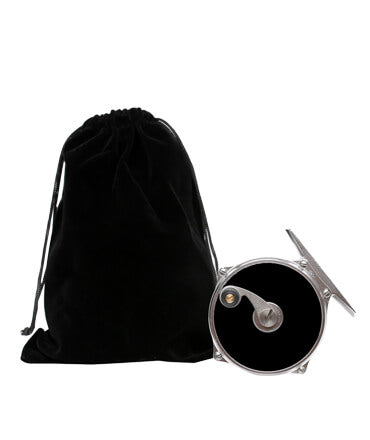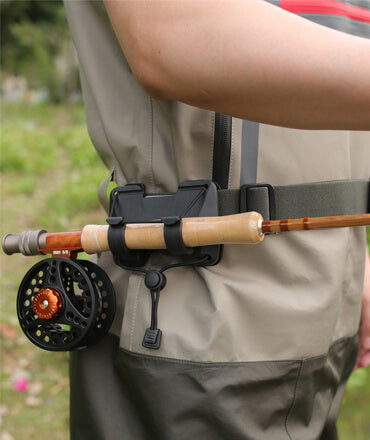Felt Sole Wading Boots: Yay or Nay? (Felt vs Rubber Wading Shoes)
Felt Sole Wading Boots: Yay or Nay? (Felt vs Rubber Wading Shoes)
Anglers love Felt sole wading boots for the fantastic traction they provided on incredibly slick surfaces.
Once in the water, the felt swells up and grips sand and gravel better. But in 2008, the concept of invasive species started gaining popularity. People became more aware of what they are and what they can do.
And that is when we saw the advent of rubber sole wading boots. They are considered safer and are now a popular choice among anglers’ next generation. But felt bottom shoes are still popular among traditional peers.
In case you are still confused, let us help you decide which wader boots you should pick; felt or rubber wading boots. Here we are discussing all the negatives and positives of felt in detail, plus complimentary tips and tricks for their maintenance in the end.
So stay hooked!
Felt vs Rubber Wading Boots
The main difference between felt and rubber wading boots is traction. Felt provides excellent traction due to the higher friction it offers. Felt sole is best option while wading through streams having slimy and slippery rocks covered in moss & algae. However, rubber sole wading boots are best for hiking on a rough terrain where there can be mud and sharp rocks but not very slippery surfaces. Also, rubber soles are a great choice for winters. Because in winter felt sole waders will be covered with snow and have absolutely no traction.
That being said you can always install studs on your felt or rubber sole wading boots to enhance your traction and stability.
Here are some best felt wading boots options available on the market
Simms Tributary Felt Sole Wading Boots – Best Option
Korkers Buckskin Mary Women’s Wading Boots – Women’s Wading Boots
Korkers Darkhorse Men’s Wading Boots – Interchangeable Rubber & Felt Soles
Kylebooker Men’s Hellbender Wading Boots – Felt & Cleated Soles
Lurewilder Felt Wading Boots – Budget Option Felt Sole Fly Fishing Boots
Felt Sole Fly Fishing Boots
Felt Sole Wading Boots: What’s Good?
Let’s start with all that is good about felt soles. I mean, they were immensely trendy (still are) for a reason, and you ought to know it.
Felt Sole Traction
Why felt sole wading boots? The grip is the primary reason anglers still like felt soles while purchasing the best wading boots pair. Felt has a fantastic ability to stand tall and steady on pebbles and sand on a river shore. They are an excellent choice for fly fishing on moss-covered slippery rocks, uneven underwater surfaces, and slick wet logs.
Related Post: 9 Best Wading Boots for Slippery Rocks
Why is there felt on the bottom of shoes? The felt sole fly fishing boots produce higher friction due to the roughness they offer. If you are wading in freestone streams, you are likely to fall on your back unless you use a high-quality felt fly fishing boot like the Simms Tributary Felt Sole Wading Boots.
And studded felt wading boots, mmmm, even better!
Where Are Felt Sole Wading Boots Banned?
Many states have banned the use of felt bottom fly fishing boots due to their association with the spread of invasive species. Felt wading boots ban 2021 states are:
Maryland banned felt soled wading boots in 2011.
Alaska imposed a felt sole wading boots ban in 2012.
Missouri banned felt soles in 2012.
Rhode island illegalized felt soles in 2012.
Nebraska banned the use of felt in 2013.
South Dakota put a statewide ban on felt in 2013.
Also,
Yellowstone National Park, though not a state, has implemented a ban on felt soles since 2018.
Other States that are Considering Banning Felt soles are:
Idaho Montana Maine New Mexico Oregon
How to Clean and Disinfect Felt Sole Wading Boots?
There are a few ways to eliminate the danger of species spread via felt sole wading shoes. All of these involve soaking, washing, and drying your felt bottom fishing boots thoroughly to eliminate any nuisance species.
You can use small brushes, like toothbrushes, to remove the mud stuck in tiny nooks and corners of the boots before soaking them.
Remember, the cleaner, the safer!
1. Detergent
In this process, you need to make a 5% solution of detergent in water. This solution is suitable for disinfecting all of your fishing gear.
Method:
Take one cup of detergent or a particular boot cleaning solution in a gallon of water.Soak felt bottom boots in the solution for a minimum of 30 minutes.Take out the boots and rinse with clean tap water.Now, dry thoroughly.
Note: look for the detergent that can kill invasive species such as didymo. Organic or green detergents are ineffective in this regard.
2. Salt
A 5% salt solution can disinfect all fishing gear except those with metallic parts.
Method:
Mix 2 cups of salt in 2.5 gallons of water.Soak felt bottom wading boots in the saline solution for 30 minutes or more.Rinse the boots with clean tap water.Now, dry entirely.
Thorough drying is crucial. Usually, felt wading boots on average take 48 hours to dry inside out. This duration can differ depending on the brand and model.
Why Felt Sole Boots Are a Thing of Past?
It’s been more than a decade since all wading gear manufacturing companies have started to focus more on the alternatives for felt wader boots. And Rubber wader boots have become the next best thing or THE BEST THING.
Felt wading shoes are undoubtedly better at gripping, but it has a severe flip side too.
Felt Grips
Wait, what? Wasn’t this the good thing about felt?
Well, did no one ever tell you that being TOO good at something also has its setbacks? Because there are!
In this case, the enormous gripping capability of wading boots felt poses a threat to the aquatic ecosystem’s balance. The angler moves from one water body to another, and those species get a piggy ride in the angler’s felt shoes. Few parasitic organisms, such as slugs, bacteria, etc., attach to the rough surface of the felt sole wet wading shoes. This way, the organisms spread and create havoc in the biological and ecological balance.
Also, the felt sole wader boots take a long time to dry. Had it dried more quickly, the organisms could not survive on its surface, making it less risky.
why are felt soles illegal? Invasive species are the sole reason why felt bottom wading shoes are illegal in many states of America and other countries such as New Zealand.
Here are some advantages of rubber wading boots.
Rubber Sole Wading Boots: What Makes Them Better Than Felt?
Since 2008, people grew more and more aware of the dangers posed by the spread of invasive species. Governments and officials started educating fishers and anglers about them.
And so, RUBBER SOLES WERE BORN!
Companies started producing boots after boots with rubber bottoms, each a bit better than the last one. We have seen a massive improvement in the gripping ability of rubber fly fishing boots due to better designs and quality materials.
Here are three advantages of rubber sole wading boots over felt ones:
 Rubber Wading Boots
Rubber Wading Boots
Equivalent Traction
Designs have improved a lot. Gone are the days when rubber soles wading boots were any less than felt ones at providing traction. Several innovative modifications and materials have now made rubber soles almost equivalent, if not better, at giving a solid grip to the ground. Newer models of men and women’s felt bottom wading shoes such as the Orvis Men’s Ultralight Wading Boots come with grooves and holes specifically to avoid slipping.
Plus, there is always an option to add studs as studded wading boots perform even better. Manufacturers nowadays design soles that can easily accept and retain studs for added grip.
Sustainability
Rubber soles wader boots are a sustainable choice. They last pretty long. Felt wader boots, on the other hand, wear off very quickly and needs replacement very often. There are several felt sole replacement kits available in the market to do the job.
The rubber soles are considerably rigid in this regard. They face wear and tear very well, and a high-standard one can last you a lifetime.
Risk-Free
Understandably, with rubber, there is no risk of the spread of invasive species involved. Because rubber is a smooth material, organisms cannot stick to it and spread it to other places. Hence, rubber bottom wading boots are a much safer option environmentally.
Faster Drying
Rubber dries fast. It is water repellant by its chemical nature, so it retains no moisture after you step out of the lake. This fast-drying property is crucial because it makes rubber soles more resistant to any species growing up in them. Remember a rule of thumb, no water = no life.
You have to dry your boots completely before starting another round of fishing. This instruction applies to felt and rubber, and with rubber, it is easier to do so.
Snow Friendly
Felt wading boots fail in snowy conditions. Ice crystals adhere to its surface and make a smooth frozen layer beneath it, resulting in zero friction. Rubber, on the other hand, gives better traction because of its water-repelling nature. Rubber sole wading boots are the boots of choice in cold temperatures.
Conclusion
Even if you are still undecided on the felt vs rubber wading boots fiasco, the Korkers have the right shoe for you. Their Darkhorse Men’s Wading Boots have interchangeable soles and are one of the best felt sole wading boots. So you can enjoy the experience of both felt and rubber wading boots.
But before going, hear out my two cents:
Felt sole wading boots are the uncrowned champion for giving superb traction on wet rocky surfaces. They provide an unmatched grip. They should be your choice of boots in rushing rivers with smooth moss-covered pebbles in their bed. Without them, I would have fallen straight on my face and broken quite a few bones during my trip to Smokies, where I encountered the slickest conditions of my fly fishing journey.
BUT!
There has been a lot of felt hate recently. The invasive species made rubber wader boots invade the wading boots industry and left felt feeling a bit old-fashioned. Now rubber rules the fly fishing world with better gripping design, sustainable materials, and absolutely no risk of any tacky organisms getting a free ride.
So, have you chosen a side yet? Are you pro-felt, or are you sold on the rubber soles?
Related Fly Fishing Guides:
Wading Boots Guides:
Best Wading Boots 2023 (Wader Boots Reviews)
Best Wading Boots 2023
Best Wading Boots Insole 2023
Korkers Wading Boots Review
Studded Wading Boots Guide (Studs Installation and Placement)
How to Size Wading Boots? 5 Tips For Sizing Wading Boots
What are Wading Boots? Buying Guide!
Felt Sole Wading Boots
Best Wet Wading Shoes For Fly Fishing
Best Lightweight Wading Boots
Best Wading Boots For Women
Best Budget Wading Boots
Felt Sole Wading Boots
Drying Wading Boots? In 6 Interesting Ways!
Best Wading Boots for Slippery Rocks
Ultimate Guides on Waders:
Best Waders For Fly Fishing
Best Women Waders
Wading Pants Reviews
Best Wading Jacket
Best Hip Waders
Best Neoprene Waders
Best Waders for Cold Water (Winter Fly Fishing)
Best Wader Bags
Best Wading Staff
What to Wear Under Waders?
Breathable Vs Neoprene Waders Explained
Waders for Big Guys (Tall Fat Guys With Big Bellies)
Kylebooker Fly Fishing Catalog 2023
The Wadersfishing is reader-supported. When you buy through links on our site, we may earn an affiliate commission, without any extra cost to you. Learn more.











